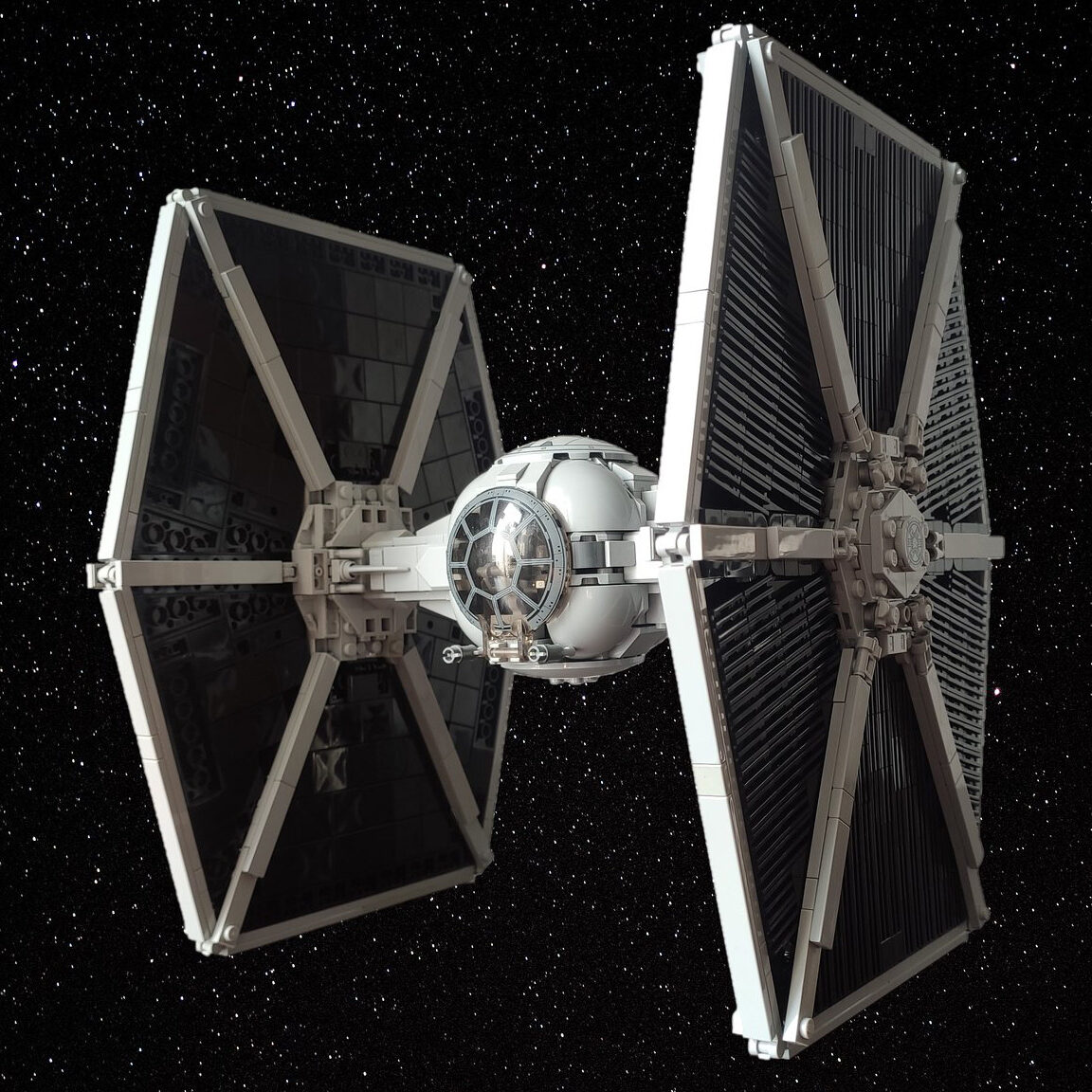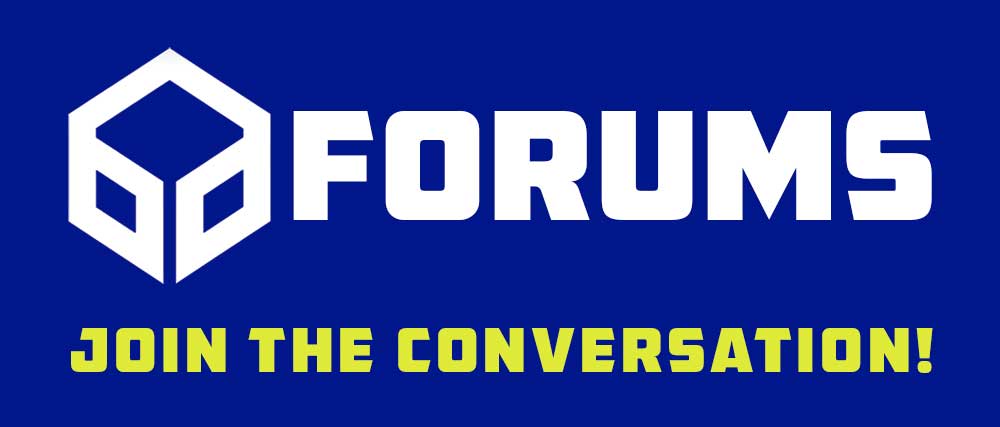It’s time to venture to a galaxy far, far away to discover what made those old games so great. For in their greatness we can rediscover the genius for future creations.
In my last article, I discussed my introduction to X-Wing – one of the most powerful things that drew me fully into Star Wars fandom. As good as X-Wing was, it’s probably TIE Fighter that really cemented my fandom…
The creatives at Lucasarts were clearly feeling cocky after the reception of their first game and expansion packs, and wanted to blow the doors off of the X-Wing gaming community. For months, I had been reading previews of the game to come, poring over interviews with the designers and drooling over screenshots. Unfortunately, upon release the family computer was not powerful enough to play it – the Christmas computer I mentioned in my previous article was still in the future at this point, and my parents had a Packard Bell 386-16 that I had been playing X-Wing on. The processor was a little too weak and there wasn’t enough RAM in the machine to install TIE Fighter, so all I could do was pine away over the box at the local retailer
Fortunately, it wasn’t that long of a wait.
My folks upgraded their computer a couple of months after TIE Fighters release, and I was finally able to jump into the cockpit of an Imperial ship for the first time. (I think the Christmas computer they gifted me with later was probably an attempt to regain control over their own machine – X-Wing and TIE Fighter were the first pieces of software installed!) But what made TIE Fighter stand out above all other games in the series? Why is it held in special regard?
I think there are two real keys:
Tone, and very light RPG elements.
Let’s start with tone. From the introduction to the game, the player can tell that the Empire is being reframed – this game reveals how the Empire views ITSELF. The opening crawl fades into an Imperial March, but not like you’ve ever heard it before. This is the Imperial March in a major key, patriotic and warm. A version of this patriotic imperial theme can actually be heard in Solo: A Star Wars story, or on the Deluxe Soundtrack – (Track 6: Empire Recruitment).
In this opening cinematic, the Empire is framed as the legitimate power and authority in the galaxy, righteously striking back at rebel insurgents who cowardly attacked the Peace Sphere….erm…Death Star. Remember also, this game came out 5 years before The Phantom Menace – but in those 3 minutes, we see the Imperial Palace on Coruscant (later retconned by Mickey Mouse Canon to be the converted Jedi Temple), Emperor Palpatine making a broadcast from what looks very much like the Senate Chamber (I’m convinced the prequels took inspiration from this scene, despite the lack of senators pods), and Darth Vader issuing orders to Vice Admiral Thrawn!
The first Tour of Duty dealt with the aftermath of Hoth, but the second Tour of Duty made me rethink how some systems may view the Empire. This tour dealt with the Sepan conflict, a civil war between rival factions that had been ongoing for centuries. The Imperials arrive as peacekeepers and mediators to attempt to bring the conflict to a close – but a mysterious figure outside the briefing room reveals that all may not be as it seems.
This leads me to the second key element of TIE Fighter: the introduction of the Shadowy Figure.
In X-Wing, missions briefings were a fairly straightforward affair – view the mission map, listen to the briefing, and accomplish the mission objectives. TIE Fighter changed the dynamic somewhat – you still had the mission map and briefing, but the ability to ask questions of the Mission Officer was added to the end of every briefing. An adventure-game style dialogue system allowed you to learn additional details – all skippable if you wanted to dive straight into the mission. But the Shadowy figure was new – this hooded cultist-looking figure offered Secret Mission objectives, straight from the Emperor – secondary objectives that were a bonus to the regular mission objectives (and sometimes might even conflict with the main mission objectives.) This increased the difficulty of the mission if you chose to take on these secondary objectives, but also offered additional rewards, in the form of joining the cult-like cabal of Imperial Fanatacist pilots each hoping to gain a really bitchin’ tattoo and become an Emperor’s Hand. This also created another interesting split in the games narrative – for those who didn’t wish to take the secondary objectives, the main mission storyline could allow the player to role-play as just an average joe in the Empire – a workaday pilot who viewed the Empire as the legitimate government, carrying out what used to be the mission of the Jedi – upholding peace and justice.
Those who drank the Imperial Kool-Aid would see the seamy underbelly of the Empire – the internal factional fighting, the secret alliances and traitors, and the true goals and objectives of the Empire. In short – you could choose to play as good-ish, or willing fascist stooge.
The bravery needed to pull off this kind of gamble in storytelling is pretty impressive, and likely something that wouldn’t even be attempted today. While Disney clumsily attempts to create a kind of moral relativism between the Rebel Alliance and the Imperials, Lucasarts of old managed to pull off why many people might’ve believed in the Empire in a completely natural way.
Not bad for a computer game from 1994.
But how else did TIE Fighter manage to shake up expectations?
To begin with – they required you to change your thinking right from the start. In X-Wing, hostile fighters were represented in red, allied fighters were represented in green, and neutral or unidentified factions were represented in blue on the radar. TIE Fighter flipped the script – allied fighters were red, hostile fighters were green, and neutral or unidentified factions were blue. If you spent any time at all playing X-Wing before playing TIE Fighter, it was very, VERY difficult to override your instict to target “red” fighters. It took acclimation time to not see yourself as being constantly surrounded by hostile fighters ,and control your instinct not to blast your allies. TIE Fighter also played up the fragility of most Imperial fighter craft – compared to the ships of the Rebel Alliance, flying in a TIE Fighter, Interceptor, or Bomber felt like flying in an egg. (The TIE Avenger, Assault Gunboat, Missile Boat and TIE Defender were much different stories, but shielded craft were not in the early missions.) What the Empire lacked in shielding, it more than made up for in swarm tactics, as well as one other discrete advantage – the ability to match speed. This game revealed why it was so difficult for rebel pilots to shake their persuers when a TIE Fighter got on their tail – and it wasn’t long before you were racking up kills and cheering the killing of these Rebel Scum.
TIE Fighter technically had two expansion packs – Defender of the Empire, and Enemies of the Empire – though the latter was only available on the deluxe CD-ROM re-release. This second expansion introduced a storyline involving some of Thrawns early experiments with a cloaking shield, and so was highly coveted – but I do wish it had been released as a discrete expansion as well. (I love my game boxes.) In my opinion, no other game in the series ever quite led up to the depth and polish of TIE Fighter, though other games introduced additional elements and refined the gameplay. This was right at the beginning of an incredible hot streak for Lucasarts that lasted between 1991-1999, and the memories of that time will stick with me forever.
But what about you? Did you play TIE Fighter back in the day? How did the faction swap affect you, and would you like to see a similarly themed Imperial Campaign today – or could such a product even be released in todays climate? Let me know your thoughts down below!
As always, keep reading That Park Place for more incredible Star Wars content like this from Lorn Conner! We’re your place for all the latest news, guides, opinions, and leaks that should be fun.









another wonderful write up. i hope you continue to post on this fun corner of the internet.
TIE fighter didnt run well on my family computer; i wasnt really able to play it until years after release. my time with it was brief compared to time spent on x-wing but i remember feeling that that this game was ‘next gen.’ showing the empire as ‘good guys’ was refreshing and led to my love of all things imperial navy. that MIDI soundtrack! Thrawn! Interceptor! star wars was so limited back in those days; it is hard to convey just how groundbreaking it was whenever a new piece of media came out.
star wars squadrons, recently released, did a solid job with respect to the imperial campaign. the audio is top notch as nothing beats the twin ion engine screeching through your surround sound (or headphones). it truly does look wonderful on a nice monitor/tv. although the game has some regrettable ‘modern star wars vibes,’ it is still certainly worth a playthrough for any fan of the old pc flight sims.
The game that taught Star Wars fans around the world that things are never different on the opposing force.